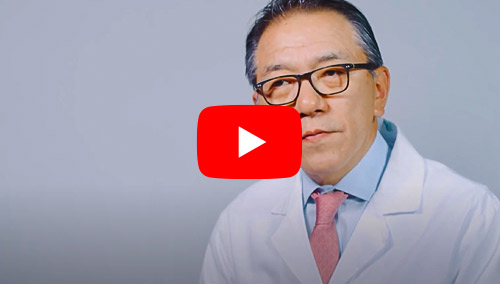Innovative Aortic Aneurysm Repair
Aortic aneurysm patients across northeast Ohio have access to the nationally recognized team of skilled heart and vascular specialists at University Hospitals Harrington Heart & Vascular Institute. Our Aortic Disease Center provides comprehensive evaluations and coordinated care for the treatment of the full spectrum of aortic diseases, including procedures for the most complex aortic aneurysm repairs.
Make an Appointment
Call today 440-613-2844.
Schedule OnlineWhat is an Aortic Aneurysm?
An aortic aneurysm is a bulge that forms in the wall of the aorta, the major blood vessel that carries oxygenated blood from the heart to the rest of the body. Aortic aneurysms can occur anywhere in the aorta and may be round (saccular) or tube-shaped (fusiform).
Minimally Invasive Endovascular Aneurysm Repair
Our heart and vascular specialists are experienced in the latest treatments and procedures, including nonsurgical and minimally invasive therapies. While the goal of aneurysm treatment is to prevent the aneurysm from rupturing, surgery is not always required. Your team will work together to develop a personalized treatment plan that takes into consideration the size of the aneurysm and how fast it’s growing, as well as your personal needs and lifestyle. Treatment may include:
- Endovascular aneurysm repair (EVAR and TEVAR): minimally invasive procedures to repair an aneurysm in the chest or abdomen by placing stent grafts through small incisions made in the groin
- Open aneurysm repair
- Medical monitoring
- Medications to lower blood pressure and reduce cholesterol
Types of Aortic Aneurysms
Aortic aneurysms are classified according to the location, size and shape of the bulge. These aneurysms occur most often in the portion of the aorta that runs through the abdomen; these aneurysms are known as abdominal aortic aneurysms, or AAAs. Aneurysms that form in the part of the aorta that runs through the chest are called thoracic aortic aneurysms.
Learn More
Abdominal Aortic Aneurysms Thoracic Aortic AneurysmsUnderstanding Aneurysm Risk Factors
The aorta is the largest blood vessel in the body and delivers blood from the heart to the rest of the body. An aneurysm occurs when there is a bulging, weakened area, in the wall of the aorta. Over time, the blood vessel swells and is at risk for bursting, called aneurysm rupture. A ruptured aneurysm can cause life-threatening internal bleeding.
Aneurysms symptoms aren’t always easily noticed, even when the aneurysm is large, making it especially important for patients to understand and manage risk factors for aneurysm.
Although the exact cause of aortic aneurysms is unknown, lifestyle factors can affect your risk for developing the condition, including:
- Smoking
- Hardening of the arteries, or atherosclerosis
- High blood pressure or hypertension
- High cholesterol
- Obesity
Other risk factors that can’t be controlled include age, family history and genetic conditions.
Diagnosing Aortic Aneurysm
Because an aneurysm usually has no symptoms, it may be diagnosed during a routine medical test, such as a chest X-ray or ultrasound of the heart or abdomen. If your doctor suspects that you have an aortic aneurysm, specialized tests can confirm it. These tests include:
- Chest X-ray: A chest x-ray may be ordered to gain insight into the size and shape of the heart.
- Ultrasound: Abdominal aortic aneurysm can be easily screened using this noninvasive technology.
- Computed tomography scan (CT): Using x-ray imaging technology, our team creates cross-sectional images of the body through CT imaging.
- Magnetic resonance angiography (MRA): A type of magnetic resonance image, an MRA is specifically designed to look at blood vessels.
- Transesophageal echocardiogram (TEE): Using a small probe, this imaging test allows a closer look at the heart’s structure and function.
For More Information about Aneurysms
For more information about expert care of aneurysms at University Hospitals, or to schedule an appointment, contact one of our team members at a convenient location near you.



